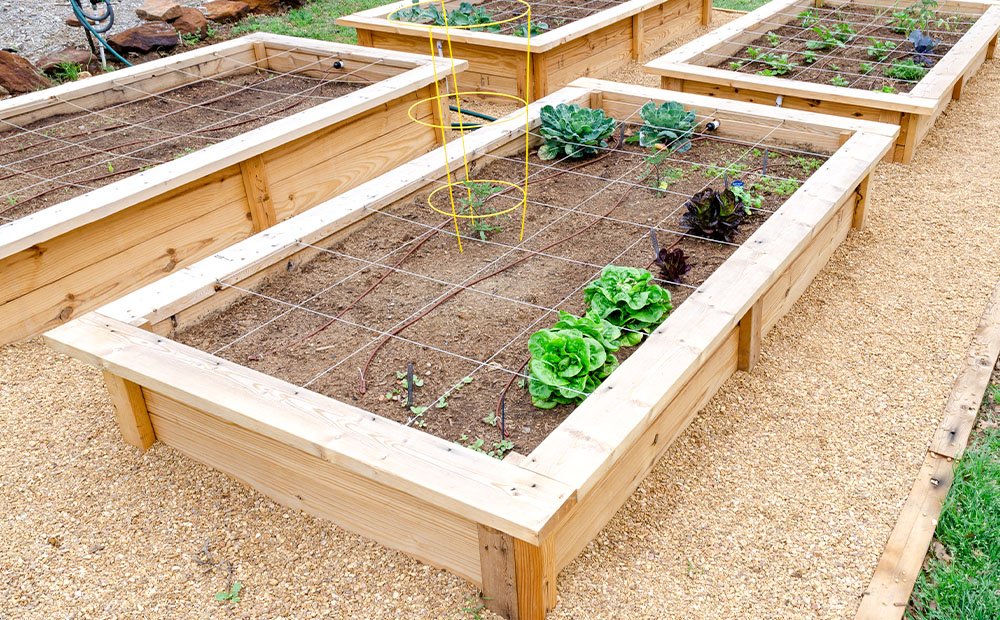Growing your own plants is fun and rewarding. A raised garden bed can help. It makes gardening easier. You can grow flowers, vegetables, or herbs. In this guide, we will show you how to build a raised garden bed. We will cover materials, steps, and tips.
What is a Raised Garden Bed?
A raised garden bed is a garden area that is higher than the ground. It is usually made of wood or other materials. This type of bed has many benefits:
- Better drainage for plants.
- Less bending for gardeners.
- More control over soil quality.
- Fewer weeds to deal with.
Choosing the Right Location
Before building, you need to find a good spot. Here are some tips:
- Pick a sunny area. Most plants need at least six hours of sunlight.
- Choose a flat surface. This helps with leveling the bed.
- Check for water access. You may need to water the plants often.

Credit: www.woodlogger.com
Materials You Will Need
Gather your materials before starting. Here is a list of what you will need:
| Material | Purpose |
|---|---|
| Wood (cedar or pine) | Frame for the bed |
| Screws | To hold the wood together |
| Drill | To make holes and insert screws |
| Soil | To fill the bed |
| Plants or seeds | What you will grow |
Steps to Build a Raised Garden Bed
Now, let’s go step by step to build your raised garden bed.
Step 1: Decide On The Size
First, choose how big you want the bed. A common size is 4 feet by 8 feet. You can also make it smaller. Just remember, it should be easy to reach across.
Step 2: Cut The Wood
Next, cut the wood to the right lengths. You will need:
- Two pieces for the length (8 feet).
- Two pieces for the width (4 feet).
- Make sure they are the same height, usually 12 to 24 inches.
Step 3: Assemble The Frame
Now it is time to put the frame together. Follow these steps:
- Lay the two long pieces parallel.
- Place the two short pieces at the ends.
- Use screws to attach the corners.
Step 4: Prepare The Ground
Before placing the frame, prepare the ground. Clear the area of grass and weeds. You can use a shovel to dig up the soil. Make it level. This helps with drainage.
Step 5: Place The Frame
Now, place your wooden frame on the prepared ground. Make sure it is level. You can use a level tool for this. If needed, adjust the ground under the frame.
Step 6: Fill With Soil
Next, fill the bed with soil. You can use a mix of garden soil and compost. This helps your plants grow better. Leave some space at the top.
Step 7: Plant Your Seeds Or Plants
Now, it is time to plant. Follow the instructions on the seed packets. If you have small plants, place them in the soil. Make sure they have enough space to grow.
Tips for Success
Here are some tips to help you with your raised garden bed:
- Water your plants regularly.
- Use mulch to keep the soil moist.
- Check for weeds often and remove them.
- Fertilize as needed for healthy plants.
Common Problems and Solutions
Sometimes, you may face problems. Here are some common issues and how to solve them:
Problem 1: Weeds
Weeds can grow in your garden bed. To stop them:
- Use mulch around your plants.
- Pull weeds by hand regularly.
Problem 2: Pests
Insects may harm your plants. To keep them away:
- Use natural pest repellents.
- Check your plants often for signs of pests.
Problem 3: Poor Growth
Sometimes, plants do not grow well. This may happen due to:
- Not enough sunlight.
- Improper watering.
Make sure your plants get enough light and water.

Credit: www.dammannsgardenco.com
Frequently Asked Questions
What Materials Do I Need For A Raised Garden Bed?
You need wood, screws, a drill, and soil. Optional items include landscape fabric and mulch.
How Deep Should A Raised Garden Bed Be?
A raised garden bed should be at least 12 inches deep. This depth allows roots to grow well.
Can I Use Treated Wood For A Raised Garden Bed?
Yes, but choose treated wood that is safe for food. Look for “low-toxicity” or “natural” options.
How Do I Fill My Raised Garden Bed?
Fill it with a mix of soil, compost, and organic matter. This helps plants grow strong and healthy.
Conclusion
Building a raised garden bed is simple. With the right materials and steps, you can create a wonderful space for growing plants. Enjoy the process of gardening. Watch your plants grow and thrive. Happy gardening!



